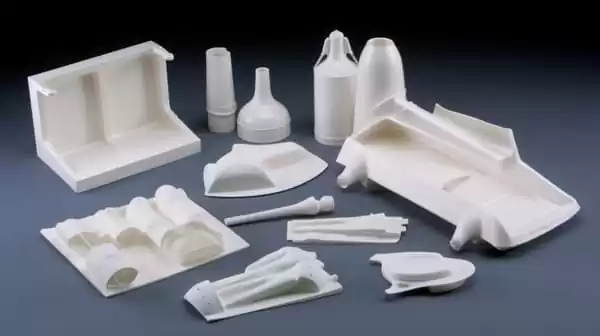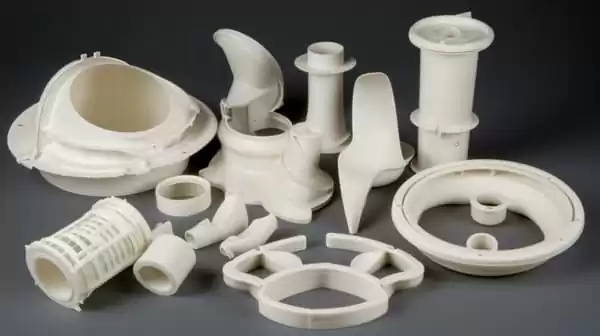Introduction
Vacuum forming is a versatile and widely used manufacturing process for creating a variety of plastic parts. It involves heating a plastic sheet until it becomes pliable, stretching and pressing it onto a mold's surface using a vacuum, and then cooling and trimming it to achieve the desired shape. One critical aspect of the vacuum forming process that significantly affects the final product's appearance and performance is the choice between sharp corners and rounded corners.
Definition of Vacuum Forming:
Vacuum forming is a thermoforming process where a plastic sheet is heated and then stretched onto a mold's surface using a vacuum to create three-dimensional shapes. It is commonly used in various industries for manufacturing products like packaging materials, automotive components, electronic enclosures, and consumer goods.
Importance of Corner Types in Vacuum Formed Products:
The corners of a vacuum-formed product play a crucial role in its aesthetics, functionality, and overall appeal. The choice between sharp corners and rounded corners can dramatically impact the product's design, usability, and safety. Each corner type offers distinct advantages, making it essential for designers and manufacturers to carefully consider their application.
Overview of the Article's Contents:
In this article, we will explore the fundamental differences between sharp corners and rounded corners in vacuum forming. We will delve into the advantages and common applications of each corner type. Additionally, we will examine the vacuum forming process and its various stages, emphasizing how the choice of corner types affects each stage. The article will also cover different types of vacuum forming techniques and their suitability for specific products. Furthermore, we will discuss the significance of draft angles and wall thickness in vacuum forming and how they influence corner types. Lastly, we will touch upon the importance of sloped sides in molds and their role in the vacuum forming process.
By the end of this article, readers will gain a comprehensive understanding of the impact of corner types in vacuum forming and how it influences the overall quality and design of plastic parts. Moreover, we will highlight the significance of supporting independent authors and the benefits of accessing exclusive stories through membership. Through this exploration, readers will be equipped with the knowledge to make informed decisions in vacuum forming and contribute to the growth of content creators in the industry.
II. The Vacuum Forming Process and its Stages
Overview of the Vacuum Forming Process:
Vacuum forming is a highly effective manufacturing process used to create a wide range of plastic parts. The process involves heating a plastic sheet until it becomes pliable and then shaping it onto a mold's surface using a vacuum. Once the plastic has cooled and solidified, excess material is trimmed away to produce the final product. Understanding each stage of the vacuum forming process is essential for achieving both sharp corners and rounded corners in the formed parts.
1. Heating the Plastic Sheet:
The first stage of the vacuum forming process is heating the plastic sheet. The sheet is placed in an oven or a heating chamber, where it is heated to its forming temperature. The heating process makes the plastic sheet soft and pliable, enabling it to be molded into the desired shape.
2. Forming the Material onto the Mold Surface:
After the plastic sheet has reached the appropriate forming temperature, it is moved to the forming station. A mold, also known as a tool or die, is used to create the desired shape. The heated plastic sheet is positioned over the mold, and a vacuum is applied between the mold and the sheet, drawing the material onto the mold's surface. This creates the final shape of the part, whether it is sharp corners or rounded corners.
3. Cooling the Formed Part:
Once the plastic sheet has taken the shape of the mold, it is essential to cool it down rapidly to ensure the formed part retains its shape. Cooling can be done using fans, water sprays, or other cooling methods. Cooling is a critical stage to maintain the sharpness of corners and the overall shape of the product.
4. Trimming the Excess Material:
Once the formed part has cooled and solidified, it is removed from the mold. However, there is often excess common materials around the edges, known as the flash. In the trimming stage, this excess material is cut away to reveal the final product with its sharp corners or rounded corners.
Importance of Each Stage in Creating Sharp and Rounded Corners:
Each stage of the vacuum forming process is crucial in determining the quality and appearance of the final product. The choice between sharp corners and rounded corners starts with the mold design, as the mold shape directly influences the corner type. Additionally, the temperature and heating duration during the heating stage impact how well the plastic sheet conforms to the mold's corners during forming. The cooling stage ensures that the corners retain their shape and definition.
Furthermore, trimming is essential to achieve the desired corner type. For sharp corners, precision trimming is crucial to maintaining the 90-degree angles. In contrast, for rounded corners, the trimming process is adjusted to retain the smooth curves.
By understanding the significance of each stage, manufacturers can optimize their vacuum forming process to achieve the desired corner types and produce high-quality plastic parts with both sharp edges and rounded corners.
III.Draft Angles and Wall Thickness in Vacuum Forming
Definition of Draft Angles:
Draft angles, also known as tapers, refer to the degree of angle applied to the vertical walls of the mold in vacuum forming. These angles are essential for the easy removal of the formed part from the mold after the vacuum forming process is complete. Draft angles play a critical role in achieving both sharp corners and rounded corners in vacuum form of the final product.
Significance of Draft Angles for Easy Part Removal:
Draft angles are crucial for the smooth and hassle-free removal of the formed part from the mold. Without draft angles, the formed part would become stuck to the mold surface due to the vacuum pressure during forming. By incorporating a slight draft angle, the pressure forming the part can be released effortlessly, reducing the risk of damage to the product and minimizing the need for additional work in post-production.
Typical Draft Angles for Vac Form and Their Impact on Corner Types:
The choice of draft angle depends on the complexity of the part, the material being used, and the desired corner type. For sharp corners, a smaller draft angle is usually applied, ranging from 1 to 2 degrees. This minimal angle ensures that the formed part can be easily removed without compromising the sharpness of the corners.
On the other hand, rounded corners generally require a larger draft angle, typically ranging from 3 to 5 degrees. The increased draft angle allows the rounded corners to be smoothly released from the mold, preserving the smooth curves of the final product.
Importance of Uniform Wall Thickness for Consistent Results:
Another critical aspect in achieving both sharp corners and rounded corners is maintaining uniform wall thickness throughout the formed part. Non-uniform wall thickness and sharp angles can lead to inconsistent results and compromise the quality of the final product.
In vacuum forming, uneven wall thickness may cause variations in material distribution during forming, leading to different corner types within the same part. By ensuring a uniform wall thickness, manufacturers can achieve a consistent appearance and structural integrity in the finished product, regardless of whether it features sharp corners or rounded corners.
V. Why Sloped Sides are Essential in Vacuum Forming
Explanation of Sloped Sides in Molds:
Sloped sides in molds, also known as draft, refer to the gradual tapering of the vertical walls of the mold. In vacuum forming, incorporating sloped sides in the mold design is essential for optimizing the manufacturing process and achieving high-quality plastic parts with both sharp corners and rounded corners.
Advantages of Sloped Sides:
1. Enhanced Airflow and Material Distribution:
Sloped sides in the mold allow for improved airflow during the vacuum forming process. As the heated plastic sheet is drawn onto the mold surface using a vacuum, the sloped sides aid in the uniform distribution of material across the mold. This even material distribution ensures consistent wall thickness and minimizes the likelihood of thin spots or material variations, which can impact the final appearance of the formed part.
2. Facilitating Easy Part Removal:
Sloped sides play a vital role in the smooth removal of the formed part from the mold after the vacuum forming process. The slight draft angle allows the part to release effortlessly, reducing the risk of distortion or damage during demolding. Additionally, easy part removal enhances productivity and reduces the need for excessive post-processing, saving time and resources in the production cycle.
3. Optimal Wall Thickness and Structural Integrity:
By incorporating sloped sides, manufacturers can achieve a consistent wall thickness throughout the formed part. This uniformity in wall thickness contributes to the structural integrity of the final product and ensures its dimensional accuracy. Parts with consistent wall thickness are less likely to experience warping or deformation during cooling and subsequent use.
4. Industry Standard and Best Practice:
Sloped sides in molds have become an industry-standard and a best practice in vacuum forming. Manufacturers worldwide recognize the significance of draft angles and employ them in their mold designs to achieve high-quality results consistently.
Conclusion
In conclusion, we have explored the critical aspects of vacuum forming and the significance of corner types in this versatile manufacturing process. Vacuum forming, which involves heating a plastic sheet and shaping it onto a mold's surface using a vacuum, offers a cost-effective solution for creating a wide array of plastic parts with varying corner characteristics.















